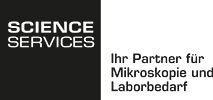Cryo Preparation using C-flat™
Product Overview
C-flat™ is a holey carbon support film, manufactured using a patent pending semiconductor-based technology without plastics, resists or other soft materials. As a result, the carbon films are flat, uniform and free of residues or plastics. C-flat™ is designed to be an “out of the box” solution, and should require minimal sample preparation. Extensive plasma cleaning is not needed, and could potentially thin the carbon, making it too fragile for blotting or freezing.
Plasma Preparation
If you are using C-flat™ for the first time, it is recommended that no plasma preparation be used initially. As with any carbon film, plasma preparation is sometimes necessary to make the surface more hydrophilic. If your initial results dictate making the films more hydrophilic, below are some guidelines for preparation using several common systems.
Fischione Model 1020
- 25% Oxygen / 75% Argon
- Use 5 grid holder and dampening shield
- Plasma clean grids for 10-30 seconds
Note: It is recommended that the dampening shield be used when cleaning C-flat™ using the Fischione Model 1020 plasma cleaner. The shield will dampen the effect of the plasma, reducing the erosion rate of the carbon while allowing the film to become more hydrophilic.
Gatan Solarus™
- 25% Oxygen / 75% Argon
- Place grids on a support (e.g. glass slide)
- Set slide in the bottom of the chamber
- Set RF power to 25 watts
- Plasma clean grids for 10-20 seconds
Glow discharge
These systems vary widely depending on the manufacturer. Typically, keep the glow from the plasma dim and the clean time approximately 10-30 seconds.
Plunge Freezing
Recommended settings for plunge freezing with the Vitrobot™
- Temperature: 4°C
- Humidity: 100% (can vary between 90-100%)
- Blot time: 3-5 seconds
- Volume on Grid: 3µL (can vary)
- Drain time: 0 seconds
- Offset: 0 for regular samples, -1 for viscous
When using the Vitrobot™, it is recommended that the filter paper be changed regularly (generally after freezing 4-5 grids or 10 minutes, whichever comes first.) The filter paper can become saturated in the high humidity environment of the chamber.
Working with Viscous Samples
Generally, lowering the volume of solution on the grid can help to eliminate the need for multiple blots, which can damage the carbon film. As little as 1µL of solution can cover a 3mm grid area if the pipette tip is used to spread the drop, but reducing the volume to 1.5 or 2.0µL will help as well. Once the sample is on the grid, it should be blotted within a few minutes before further evaporation occurs. If a Vitrobot™ is used, changing the offset from 0mm to -1 or -2mm can also help.
Hydrophilicity / Hydrophobicity
Increasing the hydrophilicity of the carbon film will help a droplet spread evenly over the carbon, rather than pool on the surface. The most common method for achieving this is by plasma or glow discharge; recommended settings for various equipment are given. Keep in mind that C-flat™ is manufactured without any plastics or soft materials in the process, therefore plasma or glow discharge steps are only needed to make the surface more hydrophilic, not to clean. For this reason, a lower power and time is generally used.
Adding Carbon to C-flat™
Many C-flat™ parts are now offered in both the standard as well as a thicker carbon film, designed to give each lab the option to choose not only the most appropriate hole geometry and size, but also the ideal carbon thickness for their application. In addition, carbon can be added to C-flat™ either to thicken the existing hole pattern, or as a thin continuous overlay across the hole pattern. Overlays are often used when particles have a strong affinity towards the carbon material.
Keeping the Carbon Intact
C-flat™ is designed to be an “out of the box” solution. Extensive sample preparation steps are generally not required, and often carbon that is torn or broken is a sign of plasma cleaning that is too long and/or at too high a power setting. Please refer to the suggestions on plasma cleaner settings, as well as on working with viscous samples.
Publications using C-flat™:
- Near-atomic resolution using electron cryomicroscopy and single-particle reconstruction. Proceedings of the National Academy of Sciences,
Volume 105, Number 6, pp. 1867-1872, 2008. X. Zhang, E. Settembre, C. Xu, P. R. Dormitzer, R. Bellamy, S. C. Harrison, and N. Grigorieff - Preparation of macromolecular complexes for cryo-electron microscopy. Nature Protocols, Volume 2, pp. 3239 - 3246, 2007. R. A. Grassucci,
D. J. Taylor, and J. Frank - Segrosome structure revealed by a complex of ParR with centromere DNA. Nature, Volume 450, pp. 1268-1271, 2007. M. A. Schumacher, T. C. Glover,
A. J. Brzoska, S. O. Jensen, T. D. Dunham, R. A. Skurray and N. Firth - Automation of random canonical tilt and orthogonal tilt data collection using feature-based correlation. Journal of Structural Biology, Volume 159,
Issue 3, pp. 335-346, September 2007. C. Yoshioka, J. Pulokas, D. Fellmann, C. S. Potter, R. A. Milligan and B. Carragher - Automated cryoEM data acquisition and analysis of 284 742 particles of GroEL. Journal of Structural Biology, Volume 155, Issue 3, pp. 470-481, September 2006. S. M. Stagg, G. C. Lander, J. Pulokas, D.s Fellmann, A. Cheng, J. D. Quispe, S. P. Mallick, R. M. Avila, B. Carragher and C. S. Potter
- Does contamination buildup limit throughput for automated cryoEM? Journal of Structural Biology, Volume 154, Issue 3, pp. 303-311, June 2006. A. Cheng, D. Fellmann, J. Pulokas, C. S. Potter and B. Carragher
C-flat™ is a trademark of Protochips, Inc. All rights reserved




